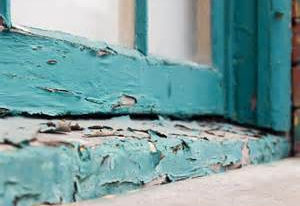31 Jan Lead in our homes
3.5 million homes in Australia contain lead-based paint (Lead Group, 2012).
Listen to my podcast interview on The Good Doctors on the heavy metal lead.
 It’s that time of year again when our children go back to school and it got me thinking about a study I quoted in my book “292 schools in NSW were found to have up to 12 times the maximum level of lead in their drinking water” (Mc Dougall and Bissett, 2008). When you consider that lead poison prevention groups urge people to flush their water for a minute or two first thing in the morning after the water has been sitting in the pipes overnight, can you imagine how much lead has been leaching from the pipes and faucets in a school as a result of six weeks of holidays? The very few studies that have been conducted on toxic lead in school drinking water in Australia have been shocking to say the least which makes me question how serious schools are in creating a learning environment.
It’s that time of year again when our children go back to school and it got me thinking about a study I quoted in my book “292 schools in NSW were found to have up to 12 times the maximum level of lead in their drinking water” (Mc Dougall and Bissett, 2008). When you consider that lead poison prevention groups urge people to flush their water for a minute or two first thing in the morning after the water has been sitting in the pipes overnight, can you imagine how much lead has been leaching from the pipes and faucets in a school as a result of six weeks of holidays? The very few studies that have been conducted on toxic lead in school drinking water in Australia have been shocking to say the least which makes me question how serious schools are in creating a learning environment.
Lead is one of the most toxic metals a child can be exposed to. In light of the recent announcement by the World Health Organisation that it is considering halving the acceptable blood levels of lead in children (from 10 to 5 micrograms of lead per decilitre of blood), the number of children likely to be diagnosed with lead poisoning is likely to significantly increase.
Current US and Australian guidelines> are 10 ug/dl ( NHMRC, 2012). More needs to be done to assess the drinking water in our schools.
Infants and young children are particularly susceptible to lead poisoning as a result of hand to mouth contact and because they absorb lead more easily than adults
Adverse health effects of lead
Lead affects almost every organ in the body. The most sensitive is the brain where low levels are associated with a reduced IQ and attention span, learning disabilities, poor classroom performance, hyperactivity, behavioural problems, impaired growth, and hearing loss.Young children and pregnant women are at particular risk.
Sources of lead in the home
- Lead paint homes built prior to the 1970s contained 50% lead in their paints. Much of this will be found in the paint on the walls and over time, accumulate as dust in the roof, floor and wall cavities. This is why it is vital that you take precautions when going into the roof or floor space (wear a P3 particulate respirator and disposable tyvek suit). Make sure you test the paint before you remove it. To remove contaminated dust and paint, contact the Australian Dust Removalists Association Incorporated ((02 9716 0966).
- Tap water is likely to contain lead if the brass taps are new (may contain 4.5% lead) or as a result of corrosion of old lead pipes, or galvanised pipes with lead solder (used up until mid 1980s). It is very important therefore that you flush the water for at least 2 minutes before you drink it in the morning. The other option is to buy a reverse osmosis filter.
- Tank water is likely to be contaminated with lead if you have lead flashing on the roof catchment area, PVC downpipes or if you live near a busy road or major arterial route. In fact 25% of rain water tanks in Victoria were found to contain lead levels above the Australian Drinking Water Guidelines (Cunliffe, 1998). There are tonnes of lead dust lying around highways and roads around Australia arising from vehicle exhausts from leaded petrol before it was phased out in 2002. Lead DOESNOT break down over time, so it will still be toxic.
- Food tins may contain lead solder. These are irregular in shape with a thick seam and horizontal depressions (dents) as opposed to a flat welded seam (The Lead Group, 2012).
- Hobbies that use lead such as lead lighting, sinkers used in fishing, painters, old toy enthusiasts, car battery and radiator workers, bullets, and furniture restorers.
- Dont store food in lead crystal, pewter or glazed pottery / ceramics.
- Building materials: PVC (vinyl) building materials, lead flashing (roof, floor), lead solder used in old gas and water pipes, wrought iron, polyethylene cling wrap,
- Other sources: lipstick, lead or pewter jewellery, antique toys, Read more.
- In Australia, lead smelting is carried out in Mt Isa and Nyrstar in Port Pirie both of which have a historical issue with high blood lead levels in the town’s children (Latimar, 2012).
How to test for lead in the body
- Blood test (go to your GP)
- Hair mineral analysis
The amount of lead leaching into water can increase the longer the water remains in contact with lead in plumbing
